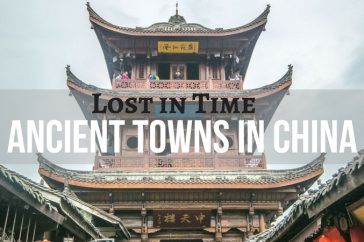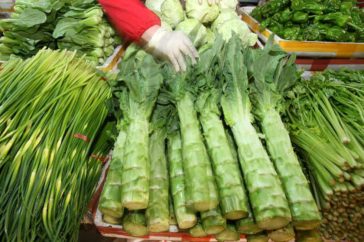Dazu Rock Carvings is one of the largest grottos in the world and is also UNESCO World Heritage Listed. Located in the Dazu District of Chongqing City, it has its beginnings in the Tang Dynasty, with development continuing through the Five Dynasties period and Song dynasties. The historic sites are…
-
-
Mount Wuyi of Fujian – Travel Guide
Wuyi Mountain, or Wuyishan, is a famous scenic tourist area and summer resort in China. It is located at the junction of Jiangxi and the northwestern provinces of Fujian. The northern section of the Wuyi Mountains has a total area of 999.75 square kilometers. It is a typical Danxia landform with its…
-
Mount Sanqing of Jiangxi Province – Travel Guide
Mount Sanqing, or Sanqingshan, is a UNESCO Global Geopark located within the region of Shangrao City, Jiangxi Province. The mountain features three main summits being Yujing, Yushui, and Yuhua. Yujing is the tallest at 1817 meters. It is a sacred Taoist mountain in Chinese culture with the three peaks representing the Three…
-
Xidi Ancient Village of Anhui, China – Travel Guide
Xidi Village is an original and well preserved traditional Chinese village that features Anhui-style architecture dating to the Ming Dynasty (1368-1644) and 3,611 Qing Dynasty (1644-1911). It was founded in the Northern Song Dynasty Huangyou Period (960-1127) and further developed in the middle of the Ming Dynasty and early Qing Dynasty era.…
-
Ancient city of Yinxu, China’s first capital city – Travel Guide
Lost to time and only rediscovered in the late 1800s, the ancient city remains were once China’s first capital under the Shang Dynasty which ruled from 1600 to 1046 BC. Yinxu (or Yin Ruins) is located on both banks of the Huanhe River to the northwest of the nationally famous…
-
Xiong’an – the Bold New Mega City that will shape China’s Future
Xiong’an New Area (CN: 雄安新区) is a new mega urban area and smart city project that encompasses three counties and 500 villages located in a strategic area that lies within the Beijing-Tianjin-Hebei triangle. What makes this project unique is, not only the scale and the vision, that it is directly…
-
Know your Chinese Tea – The Types, Growing Regions, Brewing, Culture & more
Let’s take a deep dive into the world of Chinese tea and explore types of tea with popular varieties, growing regions, selection, brewing, and wrap up with a little bit of culture. Tea Types and Varieties There are four classes of tea being Green, Black, White, Yellow, Oolong, and Fermented…
-
An intro to Traditional Chinese Breads inc. Bing and Mantou
Many people consider bread as a new product into the Chinese food culture but, actually, it has a history almost as long as the nation itself. Grinding grains into flour dates back to the Han Dynasty (206 BC – 220 AD) when mills were introduced from foreign countries via the…
-
China’s Top 50 eCommerce Sites
Trade war or not, ecommerce in China is on a continuing boom and it’s hard not to pay attention to the innovation that’s taking place especially in automation of freight and warehousing, and the massive size of some of the online portals like JD.com which has been valued at over…
-
Public Holiday Dates in China for 2019
Here’s the main holiday dates for China 2019 and the dates to join in on amazing festivals (or hide under the bed and avoid the crowds and transport chaos :)) Date English name Local name Pinyin Remarks January 1st New Year 元旦 Yuándàn New Years Day February 5th Spring…
-
60+ Books on China That You Should be Reading
Here is a reading list of the must-read China books in selected genre including The Four Chinese Classics, Culture, Geopolitics, Politics, Corporate and Business, Economics, Personal Perspectives, Sociology, Philosophy, History, Modern History, and Military – History & Strategy. Many of these that I’ve yet to read will be on my…
-
China’s Secret World Wonders and World Heritage Sites
Did you know that China has some 52 sites listed under UNESCO World Heritage? Ranging from ancient wonders to natural wonders, you’ll be amazed once more by some that you will know, and some that many never knew existed. Well, with that epic build-up, here they are, China’s 52 amazing…
-
40+ China Podcasts – History, Politics, Business, Geopolitics, Culture, and Language
Want to learn more about China? Learn to speak Chinese? How about listening to the latest views of China watchers, political figures, and current affairs in China? Well, here is my pick of the top 40+ podcasts that are freely available on the internet. At the bottom of this list,…
-
How it Works: Today’s Government in China
Let’s take a dive into Chinese politics and get an understanding of what type of government is leading China and the government structure. Isn’t that the Communist Party, the CPC? Not exactly. Let’s explore. The CPC (Chinese Communist Party) is the main political party and the ruling party and you…
-
How it Works: the Communist Party of China (CPC) [and how you join]
Politics in China is a mystery to anyone outside of the nation and not many will move beyond the label of “authoritarian”, and perhaps a few other names, so today, let’s take a bit of deeper dive into the core element of China’s political system which is the Communist Party…
-
China at War – From Ancient times to the Modern Day
In this chronology, I’ll list major conflicts, battles, and war in, and involving, China from Ancient times right through to the modern day. This timeline of China’s wars, both civil and with other countries, is broken into three main sections being Ancient China, Imperial China with sub sections for the…
-
China’s Replica Cities
With the news that a development company is seeking to create a clone of Old Quebec near Shanghai, I thought it would be a great time to revisit some of the replica cities, copycat towns, or if you like duplicature, in China. Some years back it became fashionable to replicate European…
-
China’s Mysterious Ancient Towns and Where to Find Them
While China is renowned for its famous historic sites that date back thousands of years its ancient towns have been off the radar for most foreign visitors. The ancient towns offer not just an attraction but deep insight into the culture, architecture, and life in those times. While many of…
-
New China and its 400m+ Supertall Skyscrapers
China has been the built the most skyscrapers every year for over a decade now, and last year was no exception with 77 having been built in 36 different cities. 12 were built in Shenzhen alone last year. The business model is the same for all most all of them…
-
Modern Architecture Tourism in China
With China’s new found wealth it has been going through a long and much-discussed housing boom along with a boom in oversized, xenocentric, weird architecture and skyscrapers. While much of the grand symbolic, and expensive, development led by local governments will slow down after an explicit statement by the president himself to request…
-
China’s SCARIEST Glass Sky Bridges – The Top 6
If there is something Chinese people like, surprisingly to some, it’s pushing the boundaries of their senses and the current glass walk bridge craze tickles that fancy just perfectly. Let’s take a look at some of the more interesting and new glass walk bridges that will get anyone’s heart racing…
-
The Classic China Itineraries for Self-Guided or Agency Tour
So, you want to go to China, but where? China still fascinates us with its mystical oriental charm and ancient history, especially for first-time visitors. So, for a first-time China trip, let’s explore some of the classic itineraries that take in the key historical and cultural sites that should not…
-
Celebrating Chinese Australian History – a Timeline 1829 to 2017
Excluding Great Britain, Chinese are the oldest continuous immigrants to Australia beginning some in the early 1800’s. Their contribution to Australian society is immense and spans many fields over most all of Australia’s modern history. 1829 – Fifty-five Chinese migrated to Australia. 1848 – On 2nd October the ship…
-
Guangzhou Travel Guide [inc. The Top Things to Do, Eat, and Where to Stay]
The capital of Guangdong province, Guangzhou, is a vibrant city that is the beating heart of trade, not only in the province, or southern China, but perhaps even the whole of China itself. It’s home to the country’s number one trade fair, the Canton Fair, and has throughout history been…
-
A new Global Mega-City like No Other: Guangdong-Hong Kong-Macao Greater Bay Area
What do you get when you merge nine mega-cities and two regions? A combined population of over 67 million and a GDP that's predicted to reach US$4.6 trillion by 2030.
-
A Visual Guide to Common Chinese Vegetables
Here's a one-page visual guide to some of the most common Chinese vegetables. Best thing is they are delicious and highly nutritious. With big pics, English - Pinyin & Chinese, you can easily track down your favorites in the market and try some new things.
-
The Top 15 Spa Hotels in Beijing & a Hot Tip for Beijing Travelers
Somewhere to unwind in Beijing? Here are the top spa hotels.
-
Deal Alert: Fly China to Bangkok, Thailand for 255CNY
Ctrip has hot deals with the airline Nokscoot including flying from China to Bangkok
-
Going to Shenzhen? Essential Shenzhen is the must have eBook
If you are visiting, day touring or moving to Shenzhen for work or business then this is the must-have guidebook, Essential Shenzhen.
-
List: Newspapers and News Media in China
This extends on a question I recently answered on Quora, about alternative news in China. Included here is a huge list of news outlets, mostly in Chinese.





























